Ancient and useful culture, turnip, unfairly forgotten in our time. Although many gardeners still grow a "fabulous" vitamin root plant on their beds, collecting high and stable yields.
The culture is quite unpretentious and worn, easily cultivated and requires a minimum of labor costs. The most important thing is that you need to know when landing: when to sow a turnip? What care is needed? How to store roots? How to propagate culture yourself?
In this selection of the material, the maximum information on these issues was collected. Photo gallery and video master class on the cultivation of the turnips will be clearly helped to systematize the material.
Rope, Plant Features
- An herbal plant from the kind of cabbage, turnip, is known, first of all, with its edible fleshy root.
- The roots are, depending on the variety, of different shapes (rounded, oval, flashed) and coloring (white, yellow, pink or greenish). The weight of fruits varies from 0.2 to 0.5 kg.
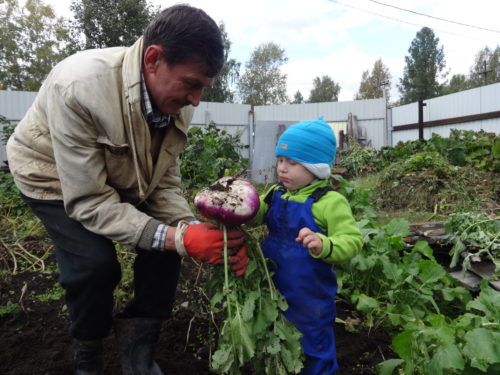
- This cultural plant is grown from ancient times. Even in ancient Egypt and Greece, the turnip was widely cultivated for use in food. The birthplace plants consider West Asia. In Russia, up to the 18th century, the turnip was considered one of the main vegetables in the diet. And only during the period of mass spread of potatoes, the turnip somewhat "passed the position of popularity."
- Rope can be annual or two-year-old culture. In the first year the root is poured and root leaves grow. In the second year of cultivation, an elongated humble stem with flowers collected in the inflorescence of a brush or a shield appears. Wanders of flowers painted in golden yellow colors. After flowering, pods with small, reddish seeds appear.

- The root leaves at the root of green, peristo-closed, lengthy, covered with small rigid hairs. Salad varieties of turnips are distinguished by the tender and smooth foliage used in food.
- Rope is not just a delicious vegetable culture, it is rich in nutrients, vitamins (A, C, in 1, V 2, V 6, Pp), mineral salts, fats and acids. Especially a lot in the roots of calcium, potassium, phosphorus, iron, magnesium and carotene.
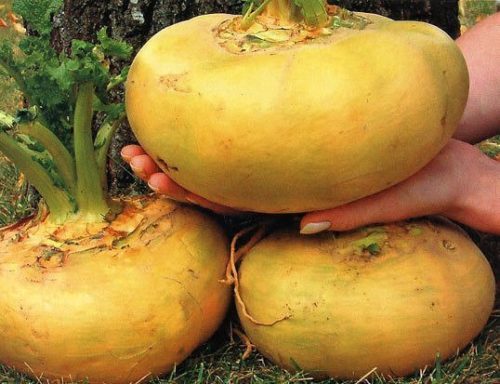
Popular varieties of repil
Rope varieties are divided into feed and dining rooms, moreover, among the latter, the salad varieties of culture are separated separately. Cutting varieties are suitable for food due to edible root, and salads are valued for a delicious root and delicate foliage used in salads.

Another classification of the varietal diversity of the turnip is based on maturation. Such varieties are divided into early (more periods in 1.5-2 months), the secondary (greater in 2-3 months) and the late varieties (more than 3-3.5 months).
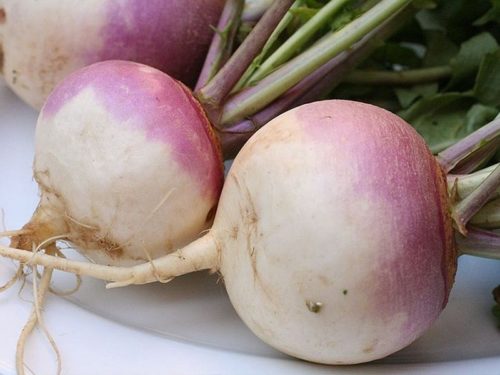
Consider the most popular, in terms of resilience, morphological features and taste, turnip varieties.
- Reta "Petrovskaya-1"
Popular variety with average maturation, unpretentious and hardy. Rights of yellow color, stored, are well stored. Fruit juicy, sweetish.
- Turnip «White Night"
High-yielding, the mid-spring variety is distinguished by large (up to 0.5 kg) roofs of white. The pulp of the fetus juicy, white. The variety is not demanding in care.
- Rope "Geisha"
Early, cold-resistant yield grade, with white small (up to 0.2 kg) fruits of rounded shape. The roots of a soft, pleasant taste, without bitterness. Salad grade.
- TurnipSnow Maiden"
Small-grade (up to 60 g), early and highly productive salad grade with rounded white root corners. The pulp of the fetus juicy, gentle, covered with thin skin.
- Turnip "May Yellow Zelennogola"
The variety is raking, not suitable for storage. The pulp of root delicate, juicy, without bitterness.
- TurnipSapphire"
Salad variety of turnips with very gentle, smooth and juicy salad leaves.
- Rope "Snow White"
Salad early sorted variety, with rounded snow-white roots, weighing up to 80. The cold-resistant, the shadowing variety of turnips is characterized by high taste, white, juicy and tight pulp.
- Turnip «Golden Ball »
Unpretentious grade with average maturation. Differs in high yield and cold resistance. The root of the rounded shape, yellow, with a dense and juicy flesh, slightly sharp taste. The weight of the fetus is about 150 g.
- Turnip «Rannevel Purpleny
Famous early grade with white round fruits and pink top. Fruits small, with sweet and juicy flesh.
- Turnip "White Ball"
High-yielding salad grade, middle-timed aging timelines. Large white roots (about 0.5 kg) rounded shape are highlighted soft, without bitterness, taste.
- Turnip «Milan Belayakrasnogol "
Surprise grade, with a shiny root root. Fruit color from above - purple-burgundy, the tip is white.
- Rope "Comet"
The mid-length variety is characterized by a cylindrical shape of the root. Fruits are not large (about 100 g), juicy, slightly sweetish.
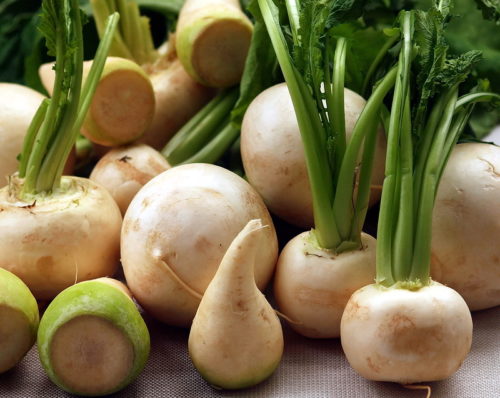
Growing the turnip
Growing back, it is important to take into account the features and preferences of culture:
- The turnip is an unpretentious and cold-resistant root root, whose seeds begin to germinate at a temperature of + 2 ° C. It can even be cultivated in some regions of the Far North.
- Rope is a rapid culture that can be sowed several times per season. As a rule, it is grown in 2 or 3 stages.
- Rope is a light and moisture-loving plant. Especially important is the presence of good lighting in the early stages of the plant formation. Good illumination, moreover, contributes to the formation of vitamin C root
- How to grow a turnip properly to please yourself and closely with high crops sweet delicious pulp root and juicy salad foliage?
- There are two options: seeding directly into open soil and growing the turnip of the repellent method. Consider the features and agricultural engineering of each of them.

Preparation of the seeds of the reap to the crop
- In front of the sowing produce seed calibration, removing damaged or hollow seeds. For this, the seeds are poured with a solution with a solution of salt (5 g per 100 ml of water), mix well and leave only those that remained at the bottom. The pop-up seeds are thrown.
- Then selected seeds are disinfected in hot water (about 50 temperatures 0C) or 2% potassium permanganate solution. Treatment time in both cases - 20 minutes.
- After disinfection, the seeds are thoroughly washed in running water and leave for swelling. Swelling seeds 2-3 days on a wet surface (wool, gauze) or in water, which is changed twice a day.
- Seeds prepared in this way are ready to land.
Cultivation of seedlings of the turnip
- Seeding time is calculated, approximately, 1.5-2 months before the onset of sustainable warm weather, when seedlings can already be planted into open ground.
- Seize seeds on seedlings into containers with soil or in special peat pills.
- When landing in a tablet, they first soaked in water and when the peat mixture swells enough, lay out for each of the 3-4 seeds. All tablets with seeds are covered with film, put in bright (without direct sunlight) place for germination. The temperature in the room must be about 10-15 0C. Periodically, the film must be raised, ensuring the ventilation and moisturizing of the soil.

- When seedlings open seedlies, you can cut forward shoots, leaving the strongest and viable. You can cut forward with your fingers or scissors, cutting out unnecessary shoots.
- Care of seedlings Traditional: watering, feeding and loosening. Drop the soil must be neat, without damaging seedlings.
- Strained seedlings 2 weeks before landing on the bed, start hardening. For this, gradually, seedlings are made on fresh air, every day increasing the duration of the procedure. With stable warm air temperature, the seedlings are left on the street and at night.
- The delicate seedlings of the turnips are very "capricious" during transplantation and poorly carry this operation. In this regard, it is not worth divering. In this case, landing in peat pills will have undeniable advantages, since shoots when landing for a bed (along with a peat tablet) are practically not injured.

Landing turnips in open ground
- The dates of landing the turnip into open soil depend on the climatic conditions of the region, the varieties of the turnip and the goals of its cultivation.
- Spring sowing (in April-May) seeds will provide summer revolts. If the turnip is grown for winter storage, it is planted somewhat later (in the summer, in June-July). For earlier spring crop, seeds can be sowed even in winter (in October-November).
- Autumn seeding for the winter period requires a deeper sealing into the soil than at a spring and summer landing. In addition, the grooves with seeds are better sprinkled with peat or sand, while the garden is chained by pegs. In winter, to prevent freezing seeds, it is better to pour more snow to bed.
- The optimal soil type for the landing of the turnip is light neutral loam, sovers or peatlands. In the case of acidic medium, the soil is predetermined.
- When choosing a plot for sowing turnips, you should pay attention to the predecessors plants that previously grew on the garden. It is better that the beans, cucumbers, tomatoes, potatoes are cultivated to the repa. To avoid infection of the turnips shoots, you should not land it after "relatives": radish, radish, cabbage, dike or the same turnip. This is explained by common to the family of cabbage pests and diseases affecting plants.
- For landing, the turnip is ideal for a flat or slightly lowland area, where the required moisture plant will be preserved.
- Preparation of the plot for landing turns includes: Pumping with the introduction of organic (humid, compost, reworked manure, wood ash) and mineral fertilizers (potash-nitrogen-phosphate). Prepare a plot in advance, in the fall.
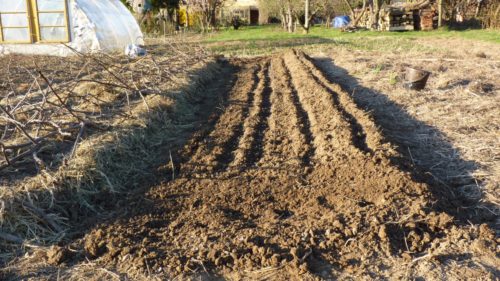
- In the spring, immediately before sowing, the plot is loose and rolled.
- Considering the minor sizes of seeds, they are mixed (for a ballast) with sand or glue on paper tape. The reference diagram is often used using double tape. This method is more laborious, although in the future will avoid the thinning of shoots. The distance between the ribbons (or rows) is withstanding at least 20 cm. A nesting method of sowing, 2-3 seeds in the socket (well), with subsequent breaking of shoots, is also practiced.
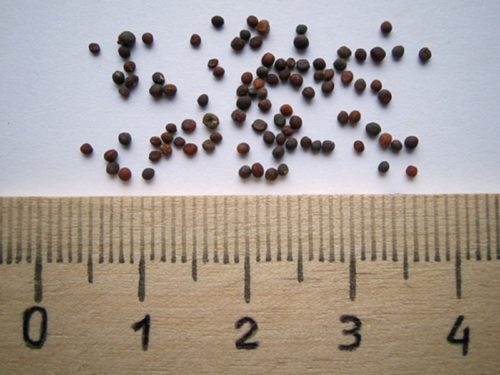
- For sowing, grooves are made, 2 cm deep and seed seeds with an interval, approximately 1 seed on 0, 5 cm of the groove. After sowing, the site is well spilled by water (without pressure), avoiding the erosion of the soil.
- To speed up the process of germination, the garden can be covered with a polyethylene film or torture peat.
- At the stage of the appearance of the second pair of leaflets, shoots on the garden are thinned, leaving the distance between plants from 6 to 10 cm (depending on the variety). As the root root increases, weak or damaged seedlings are additionally selected.
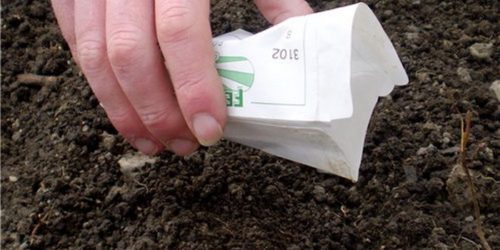
Care for repo
Rope is undemanding in care, plant, needs timely thinning of shoots, watering, loosening and feeding. In compliance with all agrotechnical measures, the average harvest of the root crops will be at least 3-4 kg with 1 m 2 Land.
Watering turnips
- The moisture and abundant turnpa need regular and abundant irrigation, especially in the early stages of the formation of the plant.
- During the period of appearance and germination of turnip shoots, the approximate water consumption is about 8-10 liters per 1 m 2 crickerel.
- At the stage of formation and thickening of the root, the consumption increases slightly and is 10-12 liters per 1 m 2 crickerel.
- When the fruit is sufficient to grow in volume, water consumption is reduced, in order to avoid cracking of the root of the reapers.
- As a rule, in the absence of regular precipitation, culture watered 2 times a week.
- Watering is carried out early in the morning or after sunset, the method of sprinkling. Moreover, the delicate young shoots are better to water a can with small sieve, and for the fasteners, grown plants can already use the hose.
- It is better that water for watering is not too cold. To do this, you can dial water in advance in a barrel or other free container.
- The lack of moisture adversely affects the quality of the roots: they are noticeably stuck, and the pulp begins to be patterned. Excess and stagnation of moisture also leads to undesirable consequences: the plant rotates and provokes a number of diseases.

Dipple loosening
- So after irrigation, the crust is not formed and the natural aeration of the soil was not disturbed, it is necessary to constantly loose soil and remove weary grass.
- Before the first loosening, gardeners advise to sprinkle a garden or mustard gardening, so seedlings from cruciferous flews.
- In order not to loosen the land after each watering, you can climb aiser with a hene or straw.

Feeding turnips and fertilizer
- Undercuming turnips are carried out 1-2 times for the entire growing season. Used both mineral and organic fertilizers.
- It is most often used from the organic wood, compost, dung-ramp.
- In the case of sufficiently fertile soil, additional feeders can be excluded.
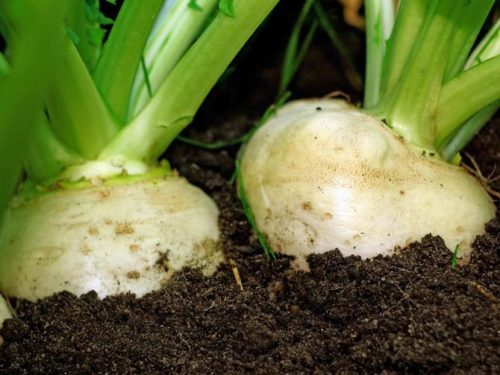
Fighting pests and disease diseases
- The most common pests of the turnips are cruciform flea. Especially they are dangerous in the early stages of culture development. As prevention, after planting and irrigation, the garden is treated with rejuvenating insects substances: tobacco dust, wood ash, mustard. After that, the arseny loose along with these components. If such events did not help to cope with pests, insecticide spraying, type carbofos, accuters, etc.
- The cruciferous family has a number of common pests: cabbage flews, bugs, flies, moths, wave, scoop, weevil, etc. Therefore, in order to avoid infection, you should not land the turnip next to the "relatives".
- Of the diseases affecting the turnip, the most famous are: phomoz, keel, bacteriosis, gray rot and black leg. Damaged plants are removed, and the remaining shoots are treated with therapeutic means. At the first stages of the disease, you can try "folk" recipes (decoction of potato or tomato tops, soapy solution). If the disease continues to progress, apply the appropriate fungicides (Fundazole, Topsin).
Collection and storage of crop turnips
- To save the harvest as much as possible, it is important to clean and store root correctly.
- For consumption in food, root crops that have reached 6 or more centimeters in diameter are collected.
- Korneflodes carefully dig or pull out not to damage the integrity of the fetus and not provoke the rotation process. Botto with harvest assembly is cut at the root level (you can leave a tail no more than 1 cm), not allowing damage to the pulp of the fetus.
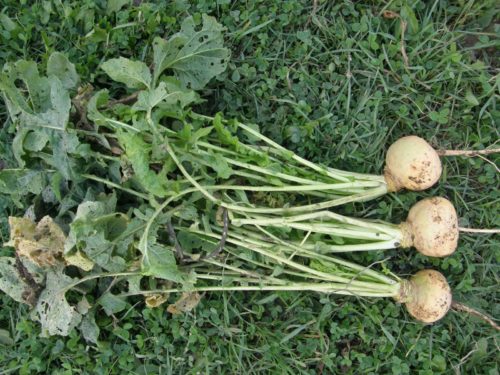
- Dug off the reverse is cleaned from the ground, sort and dried in a dry and cool room.
- The collected rooted roots are folded into the boxes and shrink sand. Store such a turnip at a temperature of 0-3 ° C of about 3 months.
- A small amount of turnips can be stored in the refrigerator, in a polyethylene package, up to 1 month.
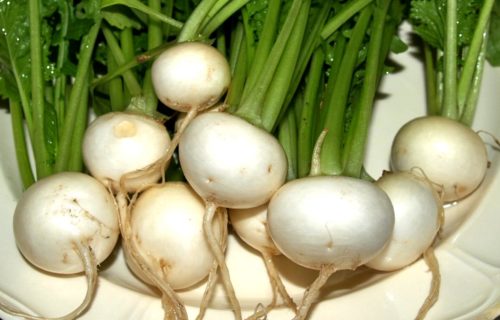
- At room temperature, the repa can be "lying" no more than 2 weeks. After that, she loses taste, begins to be pattering and wither.
- If the turnip was exposed to frosts, it is no longer worth allowing it to be stored.
- The cultivation of the turnip from the seeds of its own production is an easy task. To do this, the well-preserved copy of the turnip is planted in the spring in the open ground, providing a regular watering plant. After flowering, pods with seeds appear on the turn. Ripe dry pods are broken and peeling about about a week. Common seeds are stored in a dry, cool place.
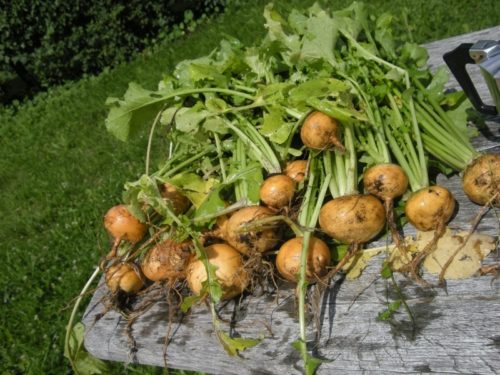
Application of turnips
- The turnip is a delicious and useful food. A variety of dishes are known, where the root crops are boiled, baked, fry or stuffed. Salad Rope varieties are also appreciated with edible gentle leaves.
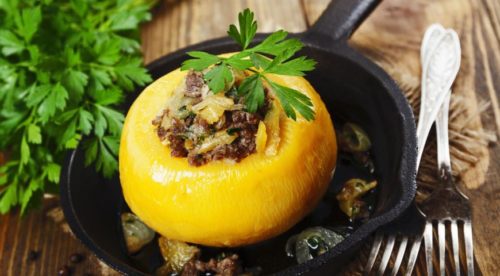
- In addition to the food purpose, the repa is a healing agent for diseases of the respiratory system (cough, laryngitis, asthma), colds, gout and intestinal peristalistic disorders. The valuable root root has anti-inflammatory, diuretic, antiseptic and painkillers.
- The use of turnips in chronic diseases of the liver, kidneys and diseases of the gastrointestinal tract in the acute period is not recommended.

Thus, considering the key points relating to when and how to plant a turnip, the following conclusions can be drawn:
- The useful and nutritious product is easy to grow on its plot, and even several times per season.
- A varietal diversity of turnips allows you to choose a product at your discretion, taste preferences and climatic growing conditions.
- The cold-resistant culture is distributed in many countries of the world, including in the middle lane of Russia.
- Unpretentious in the care of the plant needs to thinning shoots, watering and loosening.
- To the question: "When is it better to plant a turnip?" There are several options for answers. It can be spring, summer and even autumn sowing.
- Takespraying with the task "How to plant a turnip seeds?" You can choose two existing ways: sow seeds right into open ground or disembarking.
- Going to keep roots in winter, it is important to know the features of successful crop preservation.
- Observing the main agrotechnical methods of planting and maintenance of the turnip in the open soil, anyone can easily grow delicious juicy fruits of the turnip.
Video: "How to grow an original Russian vegetable - turnip"
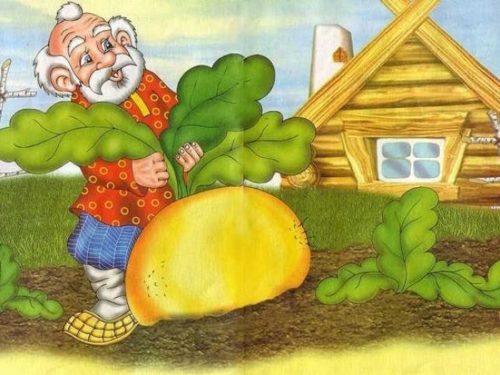

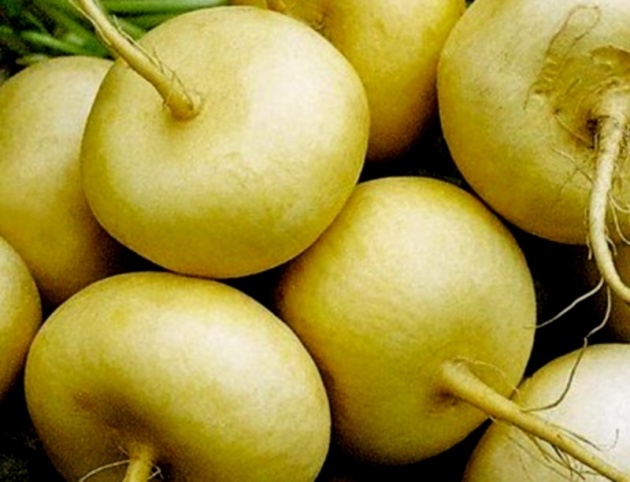
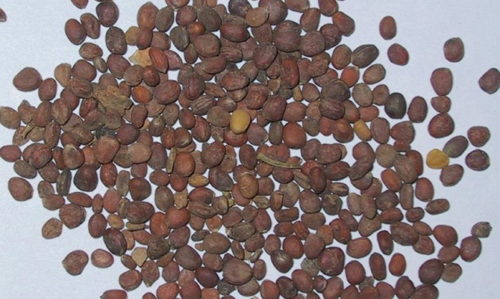

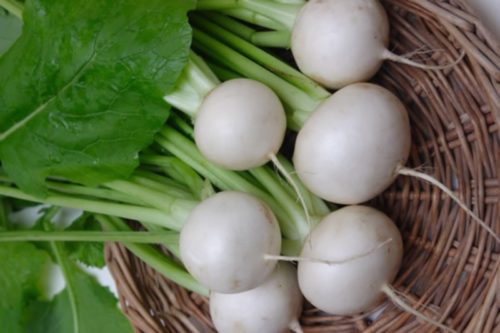

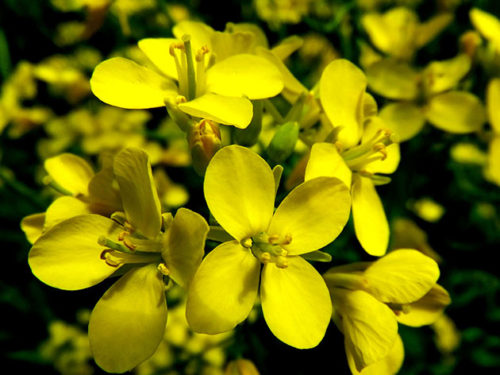
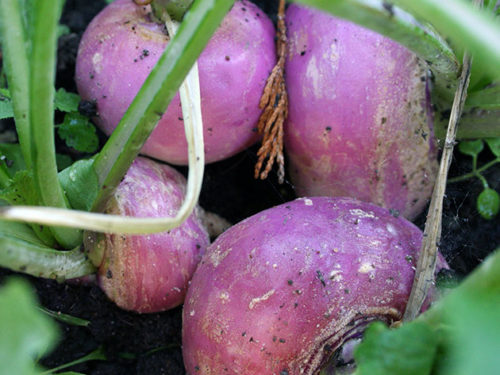
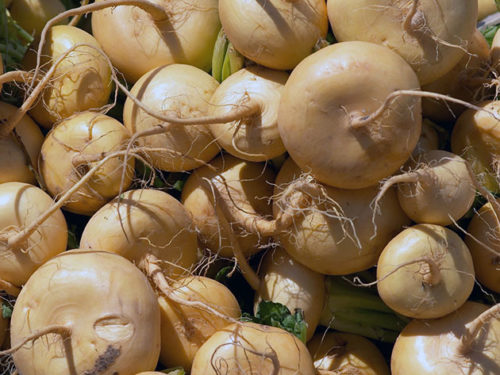
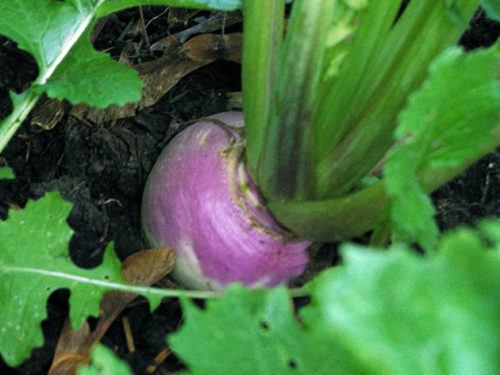
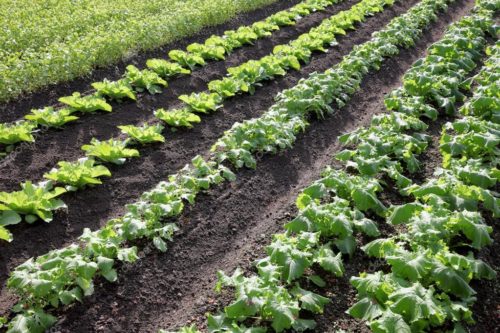














 Start a discussion ...
Start a discussion ...